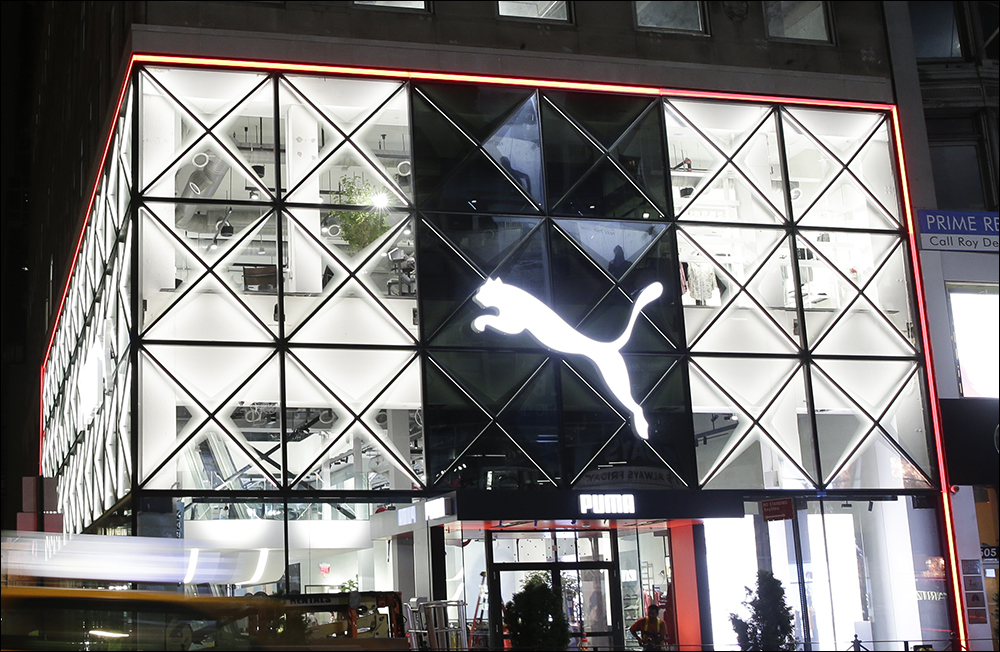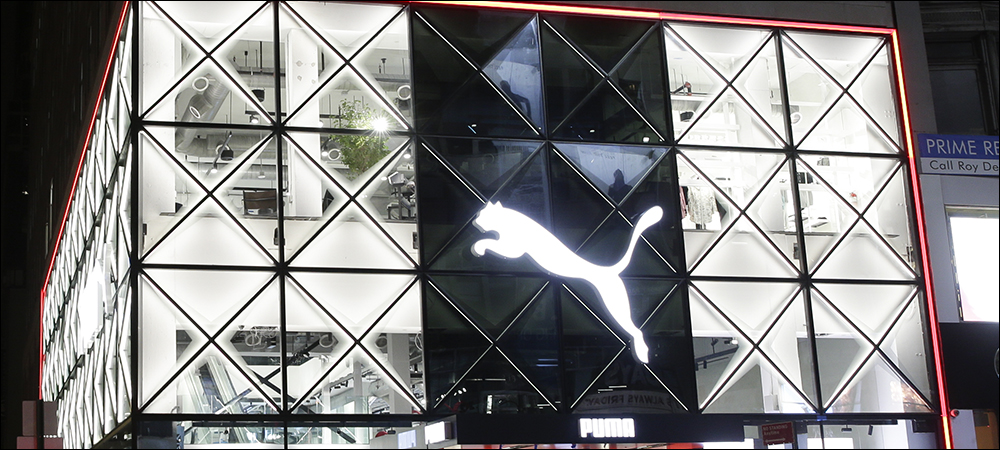- Enabling Fast Omnichannel Sales and Delivery
- RFID Deployment at New York Flagship Store
- Tagging Each Pair of Shoes
Sporting goods company Puma North America (NA) is rolling out radio frequency identification (RFID) technology at 135 stores throughout the continent following a three-store pilot. The solution has provided a 2 percent increase in sales, the company reports, based on improved inventory accuracy. The system consists of Nedap Retail‘s iD Cloud software platform, as well as UHF RFID tags, readers and printers at each store.

The Puma NA deployment shows how RFID technology can benefit retail environments.
With RFID-based data captured by the Nedap solution, the company says, stock counting by store associates is now faster and more accurate, while replenishment is more efficient, which means fewer chances of out-of-stock events. The system provides analytics such as smart refill suggestions, based on the data related to RFID readers, and it enables omnichannel sales due to visible and accurate inventory data at all stores. Puma has indicated to Nedap that it achieved a return on its investment within six months. In the long term, the company plans to extend the RFID system for use in loss prevention.
Puma is a Germany-based athletic and casual footwear company with a global presence, and it is considered the third largest sportswear manufacturer in the world. Like other retailers, Puma NA has witnessed a rise in sales, across all channels, including omnichannel. The company first met with Nedap to build an automated solution for its North American stores in May 2021.
Enabling Fast Omnichannel Sales and Delivery
“Puma’s goal was to attain high inventory accuracy, and by achieving this, the outcome has led to creating a greater experience for their customers by having a larger assortment of products available to them when they shop in stores,” says Ailen Bilharz, Nedap Retail’s iD Cloud platform director for North America. The sporting goods retailer was already familiar with RFID technology, and it deployed passive UHF RFID tags, which it attached to products so they could be tracked at its New York City flagship store.

Ailen Bilharz
That two-level, 18,000-square-foot store is designed to provide interactive digital experiences for consumer engagement, leveraging a platform from Internet of Things (IoT) software company Evrythng (acquired in 2022 by Digimarc) and hardware from Avery Dennison. Among the features at Puma NA’s new store, customers can view products in alternate colors and styles via interactive displays. These displays include RFID readers, enabling the system to identify each product a shopper is holding.
When a product’s tag is brought within range of the reader, it captures that item’s tag ID number, accesses the software to link that ID to the specific product, and displays alternative product selections on the screen. Consumers can press a button to notify an associate if they need help at the display. They can sign up for in-store events and use the RFID system as a point-of-sale (POS) option in the future.
RFID Deployment at New York Flagship Store
With the RFID system already in place, the footwear company began exploring how to use such technology for inventory management at all of its stores, with a solution delivered by Nedap. It first scheduled a pilot, which took place at three stores in early 2022, prior to the full rollout that began in the spring. Nedap has a proprietary key performance indicator approach, Bilharz says, that Puma used to capture learnings and prove the technology’s business value.
RFID tags were applied to existing products, and three stores were equipped with RFID readers for weekly inventory counts. In addition, stores were receiving goods with RFID tags for greater visibility into inventory as they arrived. Once the pre-rollout was completed, including integrated data from the point-of-sale software, Puma says it gained more than 98 percent inventory accuracy and a 2 percent increase in in-store sales.
Tagging Each Pair of Shoes
RFID tags are applied to every boxed set of shoes at the point of manufacture. The unique ID number encoded on each tag is linked to the stock-keeping unit (SKU) details in the iD Cloud software. Once the shoes are sent to the stores, employees can use a handheld UHF RFID reader to interrogate the tags during inventory counts on a regular basis, such as weekly. They can simply open the iD Cloud app in the device, then walk through the storefront or back room, capturing tag IDs and viewing which tags have been detected, along with which tagged products might be missing.
The software can identify when the number of a specific SKU has reached a pre-determined minimum, as well as provide order recommendations for fulfillment. Readers at the point of sale and store exit can also capture tag IDs to provide faster sales, reduce queues and prevent shrinkage. When a product is purchased, its tag ID is captured by the reader, and the software removes that product from the inventory list. In the future, if a tagged product passes through the exit without being purchased, its tag ID will be read at that location and an alert will be sounded, with a fulfillment order placed if the loss is not prevented.
Nedap says the Puma NA deployment was an example of how its technology can provide quick benefits within a retail environment. “There were no unique challenges or customizations, as our solution is multi-tenant and proved that RFID is as effective in the outlet, as well as flagship stores,” Bilharz states. “Nedap offers Puma NA a collaborative partnership, which allows it to naturally embed the technology into its current operations.”
Going forward, Puma NA predicts the system will provide a seamless brand experience across all consumer touch points. That, Puma reported in a press release, is because RFID technology provides stock visibility as a key enabler for product availability. The 2 percent uplift in sales comes with a 2 percent rise as well in replenishment, illustrating that on-shelf availability leads to improved sales rates.
Key Takeaways:
- Puma NA first deployed RFID at its flagship New York store in 2019, and now it is rolling out an inventory-management system from Nedap at its 134 North American stores.
- The system has enabled a 2 percent sales lift, as well as 2 percent replenishment improvement.


